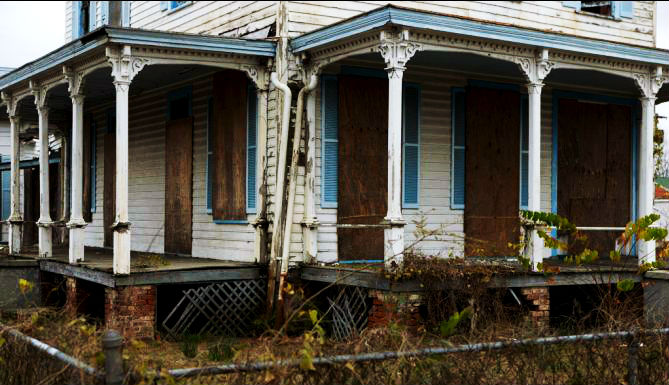Poverty Biggest Problem Facing Selma, Black Belt
Selma is known to many as the Queen City of the Black Belt. This stately designation was given to the city because of its leading role in the history of the region. Selma led the area through lucrative farming years (in the mid 1800’s, Dallas County was the 4 richest area in the country), industrialization, social and political events.
However, the Queen City has struggled to prosper in the 21 Century, like many other towns in the Alabama Black Belt. Citizens in Selma are working hard and hoping to lead a regional revival, but times are tough. Many social and economic problems ceaselessly plague Selma and Dallas County citizens. The greatest among them? Poverty.

According to Alabama Possible, more than one in six Alabamians currently live below the federal poverty line, which means they live on less than $21,954 for a family of four. The state poverty rate of 19 percent is somewhat higher than the national rate of 15.9 percent. The majority of Alabama counties’ rates hang around the 19 percent line, give or take a few points.
However, the story is drastically different for the state’s western counties that make up the Black Belt. Here poverty rates soar to 30 percent and higher, with Dallas County in last place with a staggering rate of 36.8 percent. The picture of childhood poverty is even grimmer almost 60 percent of Dallas County children live below the poverty line.
But what is causing such high rates? In Dallas County at least, unemployment has a lot to do with it. Dallas and neighboring Perry County both left 2013 with unemployment rates of 12.9 percent, which means that one in eight people were actively searching for a job but could not find one. This sounds very high for an area with job openings all around.
And this is where the situation gets complicated. A large segment of the Dallas County workforce lacks training or education to fill open job positions. This is true all across the Black Belt where towns have medical clinics, small businesses, and industrial factories with open positions and no one qualified to fill them.
Groups involved in economic development, such as Dallas County Extension and Chamber of Commerce, say that people need to get prepared now for jobs that are open or may be open in the future. This is good advice for the area that may see a pilot training program come to local Craig Field in the near future and has access to new jobs at Golden Dragon Copper and Hyundai in neighboring counties.
Now naturally, the best way to increase job preparedness is through education. This, however, is easier said than done in Alabama. While the state high school graduation rate is getting better every year (increased from 75 to 80 percent from 2012 to 2013), too many schools in the Black Belt still experience high dropout rates in the 30 to 40 percent range. And of the people who do graduate from high school, few go on to secondary education and training. For instance, in Dallas County only 15 percent of residents have a bachelor’s degree. All of these factors leave citizens struggling to compete for the high skill, high wage jobs that are often left open in their communities.
Low educational achievement in the Black Belt can be related back to the historical preponderance of jobs in the garment, timber, and agricultural industries – all of which required dedication and hard work, but little education, from employees. This cultural lack of emphasis on education, coupled with the rapid recent increase of technical jobs, have put Black Belt citizens in a hole that they’re having a hard time getting out of.
The poverty issue gets further complicated when its effect on education and employment is realized. Poverty and low socio-economic status are some of the top reasons that kids drop out of school (according to “Communities in Schools”). When surveyed, students cited reasons such as not having appropriate clothing/materials, having to work, hunger/food insecurity, lack of transportation, and low parent involvement as reasons they stopped attending school. All of these reasons are tied to poverty.

There are many other issues facing Selma and Black Belt citizens that have similar relationships to poverty crime, food insecurity, teenage pregnancy, obesity rates, single parent households, violence, welfare, and the list goes on. All of these things can be caused by poverty and can all cause folks to fall into the web of poverty. It is a slippery slope and truly a “wicked problem”.
While the challenges are great, there are several groups in Selma and Dallas County engaged in the fight against the symptoms and causes of poverty in the area. The Dallas County Family Resource Center offers financial planning information, legal and health services, and educational training, among other things, to help citizens help themselves.
Circles of Transformation is a new collaboration of several churches and civic groups in Selma that aims to fight poverty by connecting families and building relationships throughout the community. And the Selma & Dallas County Chamber of Commerce assists and promotes businesses large and small throughout the area.
These organizations, along with many others, are addressing the social, political, and economic consequences of poverty in Dallas County and making headway against the complicated and destructive issue.
Hopefully, the Queen City will continue to address poverty and its many related issues and set an example for the Black Belt once again. Dallas County is brimming with resources and potential, but needs support, ideas, and commitment from citizens all over the state to reduce poverty and change the path of the city.
(Find information about your county with the 2014 Alabama Poverty Data Sheet at http://alabamapossible.org/datasheet/ (http://alabamapossible.org/datasheet/)).
Tags: